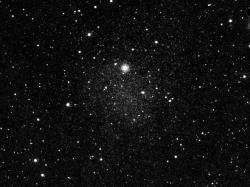Discovery shows Milky Way halo is split in two

The Milky Way is an iconic fixture of the night sky for Australians, but if looking at it makes you feel dizzy it could be because distinct parts of the system are spinning in different directions.
The discovery has been made by a team of international astronomers including two from The Australian National University. Their paper in the December 13 issue of Nature describes how the outer Milky Way is a mix of two distinct components rotating in opposite directions.
The finding proves what astronomers have suspected for around 30 years – that the Milky Way halo was not assembled all at once, but instead happened over time. It could also make it easier to locate the oldest, most chemically primitive stars in the galaxy, providing clues to the properties of stars that formed in the first billion years after the Big Bang.
The international team includes Daniela Carollo, a researcher at Italy’s Torino Observatory now undertaking her PhD at Mount Stromlo Observatory and ANU Astronomer Professor John Norris. They made the discovery after studying 20,000 stars observed by the Sloan Digital Sky Survey (SDSS-II).
“By examining the motions and chemical makeup and the stars, we can see that the inner and outer halos are quite different beasts and they probably formed in different ways at different times,” said Ms Carollo, lead author of the report.
“Although it was once considered a single structure, an analysis of the stars from SDSS-II shows that the halo is clearly divisible into two, broadly overlapping components. The discovery gives us a much clearer picture of the formation of the first objects in our Galaxy and in the entire Universe,” she added.
“This shows conclusively that there are two major parts of the halo structure – inner and outer,” Professor Norris said. “The inner halo is a part of the galaxy that is rotating slowly. The part where we live – the Galactic disc – gallops around at quite a rate, while the inner component is going in the same direction, but much more slowly. The outer halo rotates, albeit slowly, in the opposite direction.”
The discovery also reveals the two halo components have different chemical compositions. Indeed, according to Carollo, inner-halo stars contain three times more heavy elements than outer-halo stars.
Professor Norris has spent more than two decades searching for the most chemically primitive stars in the galaxy. These fossils of the early universe are extremely rare, Norris explained, so finding them remains a classic “needle in a haystack problem”. But he added that the discovery of a chemically distinct outer halo, “gives us a much better way to search the haystack.”
Source: Australian National University



















